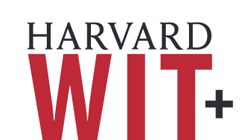Diversity fosters a more creative and innovative workforce and helps businesses avoid turnover. Studies estimate that transitioning from a single-gender office to an office evenly split would translate to a 41% revenue gain [10].
|
Members of the Harvard Community:
|
|
Manager:
|
|
Hiring Manager:
e.g., What is your favorite video game? |
Diversity and Inclusion Dictionary
- Microaggression: a statement, action, or incident regarded as an instance of indirect, subtle, or unintentional discrimination against members of a marginalized group.
e.g., “You are so articulate.” The message being sent here is it is unusual for someone of your race or gender to be intelligent.
- Unconscious/Implicit Bias: Social stereotypes about certain groups of people that individuals form outside their own conscious awareness.
e.g., Women aren’t as interested in engineering or tech related fields in general; therefore, they are not considered as successful or the right “fit” for positions. (You can visit Project Implicit https://implicit.harvard.edu/implicit/index.jsp to take an implicit bias test and become more aware of your own possible biases)
- Privilege: Automatic unearned benefits bestowed upon perceived members of dominant groups based on social identity.[4]
e.g., Seeing individuals that look like you in multiple positions of leadership.
- Mansplaining: Explaining without regard to the fact that the explainee knows more than the explainer, often done by a man to a woman.
e.g., Explaining to a female engineer that has been working on a project for months, a “solution” to fix the problem when a plan was already discovered by the female.
References
[1] Basford, T.E., Offermann, L.R., & Behrend, T. S. (2014). Do you see what I see? Perceptions of gender microaggressions in the workplace. Psychology of Women Quarterly, 38(3), 340-349.
[2] Bertrand, M. & Mullainathan, S. (2004). Are Emily and Greg more employable than Lakisha and Jamal? A field experience on labor market discrimination. The American Economic Review, 94(4), 991-1013.
[3] Born, M. & Taris, T. (2010). The impact of the wording of employment advertisements on students inclination to apply for a job. The Journal of Social Psychology, 150(5), 485-502.
[4] Case, K. (2013). Deconstructing privilege: Teaching and learning as allies in the classroom. Milton Park, Abingdon, Oxon: Routledge.
[5] Correll, S. J. (2017). SWS 2016 Feminist Lecture: Reducing gender biases in modern workplaces: A small wins approach to organizational change. Gender & Society, 31(6), 725-750.
[6] Gaucher, D., Frierson, J. & Kay, A. C. (2011). Evidence that gendered wording in job advertisements exists and sustains gender inequality. Journal of Personality and Social Psychology, 101(1), 109-128.
[7] Knight, R. (2017). 7 practical ways to reduce bias in your hiring. Harvard Business Review. Retrieved from https://hbr.org/2017/06/7-practical-ways-to-reduce-bias-in-your-hiring-process
[8] Koh, Y. (2017, Dec 14). Management: Gender bias crops up in job ads --- phrases like 'whatever it takes' and 'driving innovation' can be a factor in who applies. Wall Street Journal Retrieved from http://search.proquest.com.ezp-prod1.hul.harvard.edu/docview/1976349308?...
[9] National Academy of Sciences (US), National Academy of Engineering (US), and Institute of Medicine (US) Committee on Maximizing the Potential of Women in Academic Science and Engineering. (2007). Beyond Bias and Barriers: Fulfilling the Potential of Women in Academic Science and Engineering. Washington (DC): National Academies Press (US)
[10] Sara Fisher Ellison, Wallace P. Mullin (2014) Diversity, Social Goods Provision, and Performance in the Firm. Journal of Economics and Management Strategy. https://onlinelibrary.wiley.com/doi/10.1111/jems.12051
